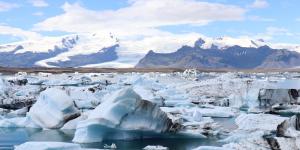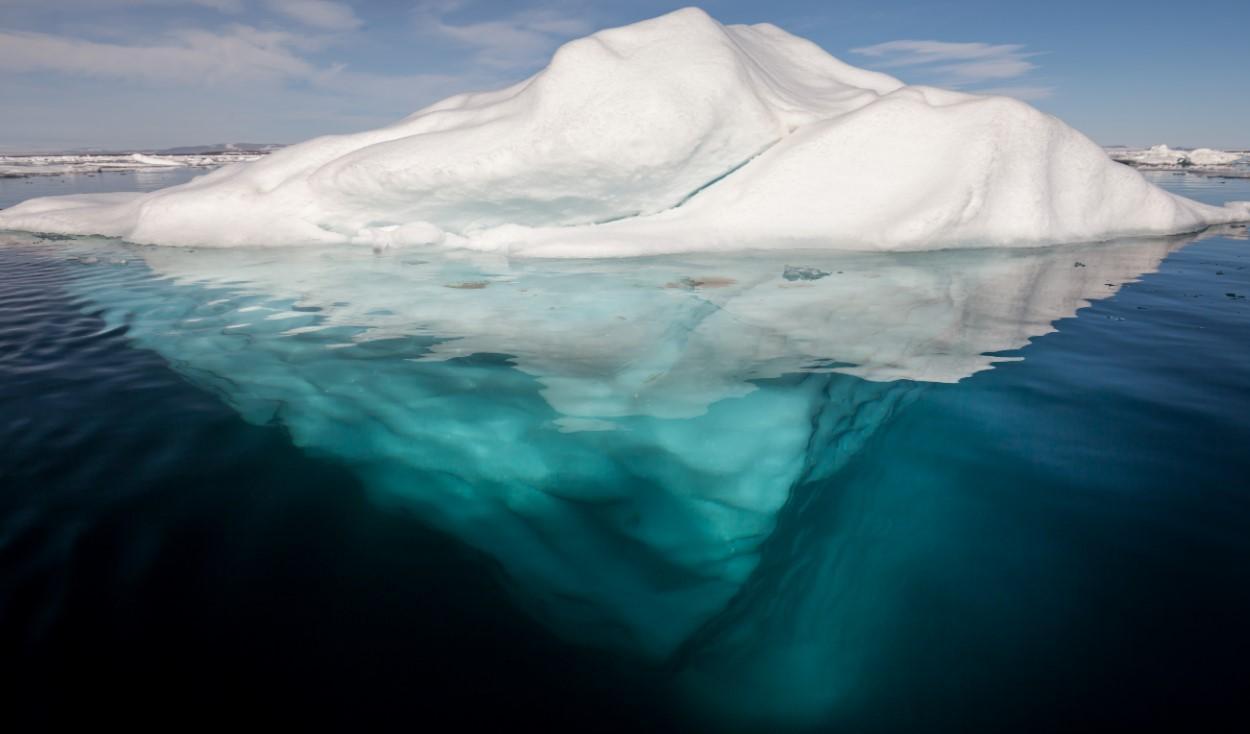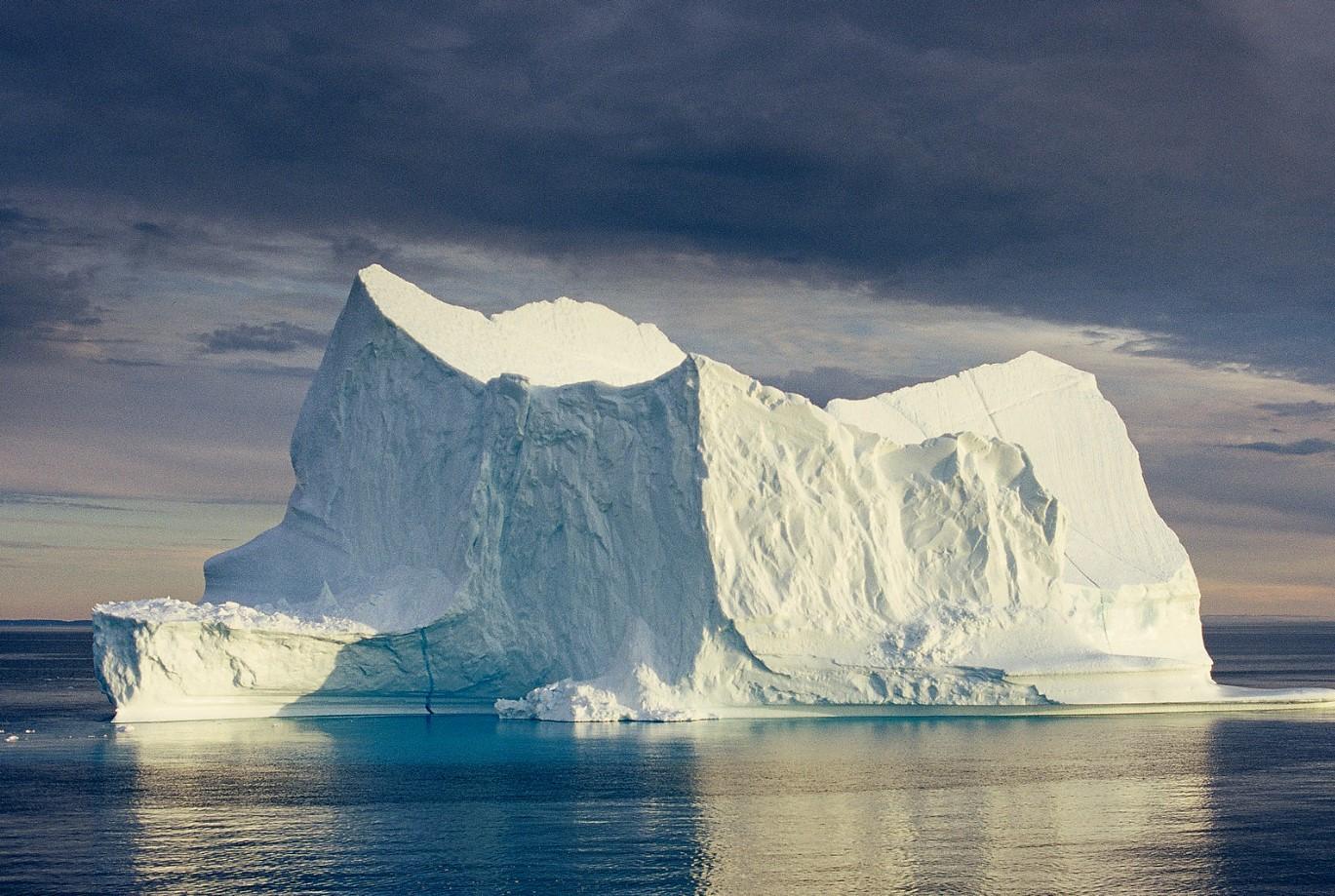What Are Icebergs? - Iceberg Definition


The temperature ranges of our planet are incredibly dynamic, but we can find the coldest zones at the poles. Especially during winter where there is no sunlight, temperatures drop dramatically with levels being recorded as low as -89 ºC (-128.2 ºF). The result of such sub-zero temperatures is found in almost every type of matter present in affected ecosystems. Although much of the sea is still liquid, even the water goes through significant changes. It is some of these changes which can result in icebergs.
At thedailyECO, we find out what these changes entail by asking what are icebergs? We provide an iceberg definition and look at the specific circumstances of their formation. We also provide some interesting facts which can give you a better perspective on icebergs in general.
What are icebergs?
In its most basic sense, an iceberg is a large piece of ice. Made up of water which has been frozen, it is essentially the same as an ice cube you may have floating in your drink. However, the differences between an iceberg and a regular piece of ice are greater than mere scale. One of the most important characteristics of icebergs is that they break off from a larger piece of ice.
In general terms, the common characteristics of icebergs include the following:
- They are found arranged in seas and oceans, but they are not made of saltwater. Icebergs are made up of freshwater. In fact, many freshwater reserves for peoples of areas which contain icebergs are initially derived from icebergs.
- Although they float in marine water, icebergs are only made of freshwater. They can travel very long distances due to their high buoyancy. Most originate in Greenland and Antarctica where 70% of the planet's freshwater reserves are found. We will why are icebergs made of freshwater in the section below on how icebergs are formed.
- They are called icebergs due to this word's origins in the Dutch language. The Dutch word ijsberg translates to ‘ice mountain’ and the English world is a derivation.
- It is estimated that more than 16 thousand icebergs with 3 million cubic meters of fresh water are produced annually.
- Icebergs are very dangerous for boats because only part of them can be seen floating on the water. The vast majority of icebergs are hidden below the water's surface. Since they can drift into various territories, they can present themselves as unexpected obstacles in shipping lanes. Due to their often massive size, extreme hardness and craggy exteriors, icebergs are known to sink ships when struck.
With these characteristics in mind, we can say the basic definition of an iceberg is a large piece of freshwater ice that floats in marine water. For more information on what is an iceberg, we look at how icebergs are formed in the section below.
Learn more about how different bodies of water function with our article on what is the difference between a lake and lagoon?

How are icebergs formed?
The formation of icebergs helps us to explain why icebergs are made of freshwater and not saltwater. This is because icebergs originate from larger pieces of freshwater ice, usually in the form of glaciers or ice shelves. Icebergs fall off from these larger pieces of ice due to climactic changes, seawater erosion and even the weight of the ice itself.
When pieces of ice fall from the ice shelf or glacier, it is known as calving. Some pieces calved into the sea are very small and will not be considered icebergs. This is because size is important. If we take all of this into account, we can update our definition of an iceberg to say that an iceberg is a piece of freshwater ice which calves from an ice shelf or glacier that is greater than 15 meters (49.2') in length and floats freely on the sea.
Difference shapes of icebergs
Now we now how icebergs are formed, we should be able tell that they are not uniform in shape. When the iceberg calves from the glacier or ice shelf, they break off into various forms which are then further molded by their journeys floating on the seawater. Icebergs can be found in the following forms:
- Tabular: most icebergs are tabular, meaning they have a flat top, but steep sides. This is true of some of the largest icebergs which can be thousands of miles wide.
- Dome: not all icebergs have a flat top. Dome icebergs have a rounded top which slopes down to the water.
- Block: similar to tabular icebergs, these have a relatively tall height which makes them look like a large block.
- Pinnacle: an iceberg that has vertical spires growing out of it which are all joined above the water.
- Dry-dock: although dry-dock icebergs are one entity, they often look as if they are separate icebergs floating together. This is because a channel has been eroded into the ice and its visible parts are separated.
- Wedge: an iceberg with a steep edge and a slop which looks like a wedge.
Icebergs can also be categorized by their color. Although generally white due to ice and snow, they can be green, blue, black or even rainbow striped. Blue icebergs are generally caused by an iceberg tipping over on itself and the smooth side being exposed above the water, although age and other factors may inform the color of the iceberg.
Some icebergs may also have holes inside them with pockets of air. This is due to air trapped within glaciers. When an iceberg breaks down, these holes can become exposed and the air is released with a distinct fizzing sound.
Why do icebergs float on water?
We can understand how icebergs float by making an analogy between a glass of water with ice and an iceberg in the sea. Icebergs float because frozen water has a lower density than liquid water. This is because the chemical composition of solid water has a crystalline form, therefore having more buoyancy than a solid.
Difference between an iceberg and a glacier
Glaciers are formed by frozen precipitation in the form of snow. When more ice builds up that can be vaporized away (by the process of ablation), a glacier starts to form. When it is sufficiently large, it will start to move under its own weight. These glaciers can be formed over thousands of years and their movement has resulted in various terrestrial formations. Continental ice sheets are glacial ice which covers land and is greater than 19,000 sq mi.
Not all glaciers are found on coastlines and many will never reach the sea to form icebergs. Ice shelves are the areas where glaciers do meet the coastline and this is often the place from where icebergs calve. Both an iceberg and a glacier are made of frozen water at very low temperatures, but they are not the same. We can better understand glaciers by looking at the differences between icebergs and glaciers:
- An iceberg is formed by the breakage of an ice shelf or by the fissure of a glacier. It is formed by a single event and is not continuous build up of ice as glaciers are formed. Icebergs can break up into smaller icebergs, but they cannot grow in size.
- A glacier is formed by the accumulation of snow. Due to the pressure of the snow's accumulated weight, this snow is compacted and ice called glacier is formed. Snow continually accumulates and the size of the glacier increases.
- Another difference lies in the location of these ice masses. The iceberg is found floating adrift in seas, while the glaciers occur on land. Icebergs are wandering and glaciers are static.
In this regard, icebergs were once part of glaciers, but become their own entity after calving. This also explains why icebergs are not made from saltwater since their origins are from the freshwater snow which has been impacted into a glacier. Frozen seawater is known as sea ice. Although sea can be extremely wide, it does not tend to be very tall since it occurs due to the surface seawater freezing.

What is the largest iceberg in the world?
The largest iceberg in the world was Iceberg B-15. We know this because it is the largest iceberg ever captured by satellite photography. It was first detected in the year 2000 in Antarctica. It originated from the Ross Ice Shelf and it is suggested that such separations are part of natural ice cycles that occur from time to time. It had an area of 4,250 sq mi (11,000 km2). Over time it fragmented into smaller icebergs that drifted out of the Southern Ocean, with the last fragment sighted in 2011.
Currently, there is a size categorization of icebergs created by the International Thread Patrol, an organization dedicated to monitoring icebergs and warning of possible risks. They have helped designate a size chart for icebergs which is as follows[1]:
- Growler: <1 m in height.
- Bergy bit: 1-5 m in height.
- Small berg: 5-15 m in height.
- Medium berg: 16-45 m in height.
- Large berg: 46-75 m in height.
- Very large berg: >75 m in height.
Now you know more about icebergs, you may want to find out about how other geographical features are formed. You can do so by reading our article on how mountains are created.
If you want to read similar articles to What Are Icebergs? - Iceberg Definition, we recommend you visit our Environment (other) category.
1. Government of Canada. (2018). Iceberg shapes, sizes and colours. Rretrieved from:
https://www.canada.ca/en/environment-climate-change/services/ice-forecasts-observations/latest-conditions/educational-resources/icebergs/shapes-sizes-colours.html
- Lertora Pinto, F. (2016). Icebergs in Antarctica. Journal of Hemispheric and Polar Studies, 7(2).
- Navarro, F. J., Otero, J., Cuadrado, M. L., Corcuera, M. I., & Martin, C. (2009). A three-dimensional model of iceberg production: numerical experiments on Johnsons Glacier, Livingston Island, Antarctica. Congress of Numerical Methods in Engineering.







